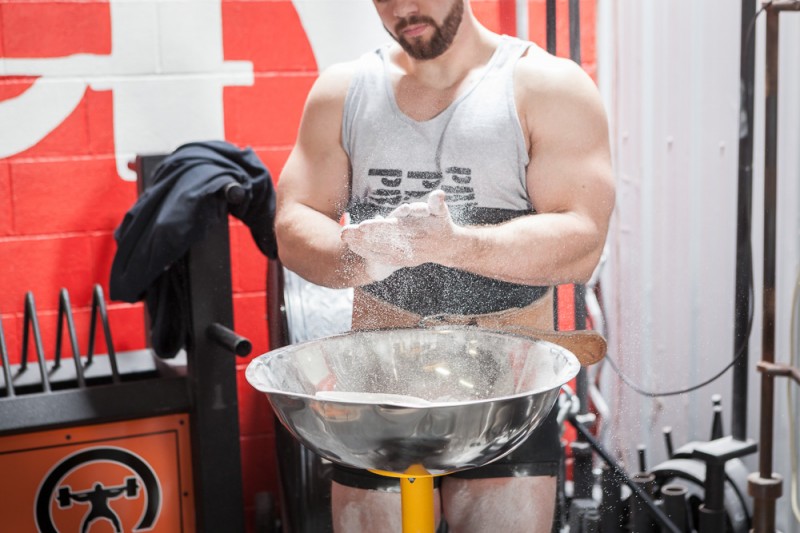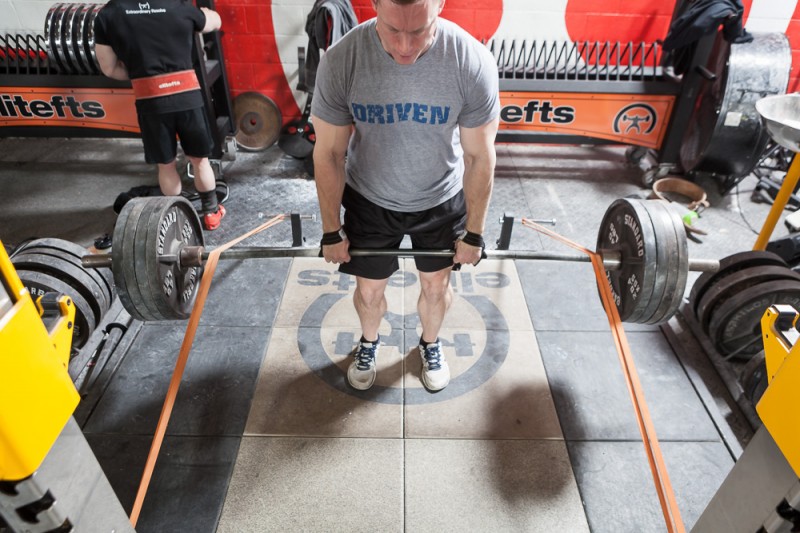
A lot of lifters out there fall into the dreaded “hard gainer” category. You know the type. You may even be one of them. You are dedicated to getting bigger and stronger. But after putting hours upon hours in the gym, you make little to no progress.
After a few months of training, you get extremely frustrated and want to pull your hair out. You’re sick of spinning your wheels. Trust me, I get it. I’ve been there.
In my experience as a strength coach, I have been approached by many people that fall into that category — people who are willing to put in the work and bust their ass, but waste so much time doing all of the wrong stuff. They just need to be shown the way.
That’s where I come in. Having been there myself and working with so many people that struggle to pack on size, I have learned the most efficient ways for guys like us to get jacked. And the solution isn’t anything fancy.
RECENT: How You Do Anything Is How You'll Do Everything
Good ol’ hard work, commitment, eating enough food and spending time doing the right things in the gym is all it’s gonna take.
I can promise you that it won’t be easy, but if you stay committed you will see twice the results in half the time.
So let’s get to it!
Get strong.
Getting strong means training with heavy weights for sets between 1-5 or even 6-8 reps in some cases. When you train for strength you will be targeting more of the fast twitch muscle fibers. Fast twitch fibers are the muscle fibers responsible for strength, speed and power. When you train mainly to target these fibers with heavy weights in the rep ranges listed above, you will stimulate what is called myofibrillar hypertrophy. Myofibrillar hypertrophy is the growth of the actual muscle fibers.
So when you train with heavier weights in lower rep ranges, you will get stronger while simultaneously developing the size of the actual muscle.
If you are a natural, drug-free lifter, this is the number one way to get jacked.
Progressive overload is a must.
The progressive overload principle means to go up in weight, reps, or sets each week of training. If you can’t add weight to the bar for the prescribed rep range, try to beat the amount of reps you did the week prior. Or add another set.
For example, if you use 225 pounds on a squat and get six reps in a rep range of 6-8, simply try to get seven or eight reps with that same weight the following week. Once you get all eight reps, then you can move up to 230 or 235 pounds.
This is a very basic principle and is something you must focus on if you’re interested in making real progress. To really make sure you are following this principle, you have to follow my next rule.
Track your weights.
I can’t stress enough the importance of keeping a training journal. How can you follow the progressive overload principle if you have no clue what weights you’ve been using? You can’t. And trust me, you won’t remember what weights you used.
You also won’t have any data to tell you if what you’ve been doing has been working. Go grab a $2 notebook and start writing shit down!
Don't train to failure.
Using a weight that is too heavy and failing at your lift is not the way you’re going to pack on size. Use a weight that you can handle and try to always leave one rep “in the tank”. When you miss a rep you can’t make the weekly progressions you need to in order to make significant progress.
If you are doing a set of 6-8 reps, use a weight that you can handle for 10 reps. This will give you a much better stimulus and training effect. Check your ego and use a weight you can handle.
Don't spend more than an hour in the gym.
A common mistake that I have made when I first started lifting, as well as plenty of other hard gainers out there is spending too much time in the gym, doing every exercise for six trillion reps. That doesn’t do shit for building muscle. In fact, it can actually be counterproductive.
When you train, your body begins to produce anabolic hormones like testosterone and HGH. After about 45 minutes or so, your testosterone levels start to plummet and cortisol, your body’s natural stress hormone, begins to secrete. Cortisol is detrimental to muscle tissue and can actually cause your body to hold onto unwanted body fat. Obviously not what we want.
Plus, if you’re training for more than an hour, you ain’t really training anyway. And please don’t compare what you do to the guys that are pumping synthetic hormones.
As a natural lifter you simply cannot recover from those workouts. Get in, go hard, get strong, go home.
Set goals.
Setting and writing down goals in anything you do in life is one of the most valuable things you can do for success. It is what takes your goals from a mere thought and brings them to reality. Read them every day and remind yourself why you’re doing what you’re doing. Reading your goals will keep you motivated and keep you focused on what it is you actually want.
It’s a lot easier to get side tracked and bounce around from program to program when you aren’t sure exactly what you want. I recommend setting three month, six month and one year goals for your big lifts, and you can even set daily and weekly goals for stuff like push-ups, time it takes to run x amount of hill sprints, chin-ups, whatever!
WATCH: Table Talk — Learning From Novice Mistakes
I also like to set goals for the amount of reps I can do with a particular weight on a particular exercise. That may be benching 225 pounds 20 times. If you can only bench it for five right now, you have to come up with a plan on how you’re going to do it.
I like to write down my one year goals first, then work backwards as to how I’m going to get there.
I do that for my training, personal life, and my business and it has worked wonders for me.
Do it!
Recover.
When you strength train you are actually breaking down muscle tissue. If you want to grow, you need to focus your time on adequate recovery, and that starts with enough sleep. Ideally, you should be sleeping 7-9 hours every night. When you sleep your body produces anabolic hormones like testosterone and human growth hormone, which are obviously vital for building muscle mass. Turn off the Xbox and get some sleep!
To add to adequate sleep, you can help your body recover with things like foam rolling, static stretching, going for a fast paced walk, getting a massage, cryotherapy, contrasts baths, and—last but certainly not least—eating quality food.
Eat big.
No one has ever put on quality muscle without eating a lot of the right foods. Also keep in mind that your health should always be your number one priority. Eating for better health will enable you to live longer, train harder, and train more, because you won’t be sick as often. This will lead to better results.
With that said, you should concentrate on eating real, organic foods that are earth grown. Stick to things like chicken breast, legumes, grass fed beef, fruits, vegetables, and cage free eggs. Drink water. Don't forget about your daily dose of caffeine (but out of respect, please drink your coffee black).
If you’re not sure where to begin with nutrition, start by cutting out everything with sugar, flour, and artificial sweeteners, dyes and colorings. Eat about six times per day, every two to three hours and base each meal on a source of protein. Don’t go overboard on the protein; it isn’t necessary. About one gram of protein per pound of bodyweight is all you’ll really need.
Eat unprocessed carbohydrates like fruit, potatoes, and rice around your workouts and make sure you get a post workout meal within 30 minutes after training. Load up on vegetables and don’t forget to add in some healthy fats like coconut oil, avocados, raw organic nuts and whole eggs. Just don’t go overboard there, either.
I hope these guidelines help you on becoming bigger, stronger and healthier than ever. In my opinion, all of these things should go hand in hand. I really hope you guys dug the post and if you did, it would mean the world to me if you could click the share button. Thanks for reading!
Chris Tutela is a strength and conditioning coach in Clark, New Jersey. He is the owner and operator of Tutela Training Systems, where he trains mainly athletes and some regular people. He has multiple years experience as a strength coach at the high school level as well a professionally in the private sector.











